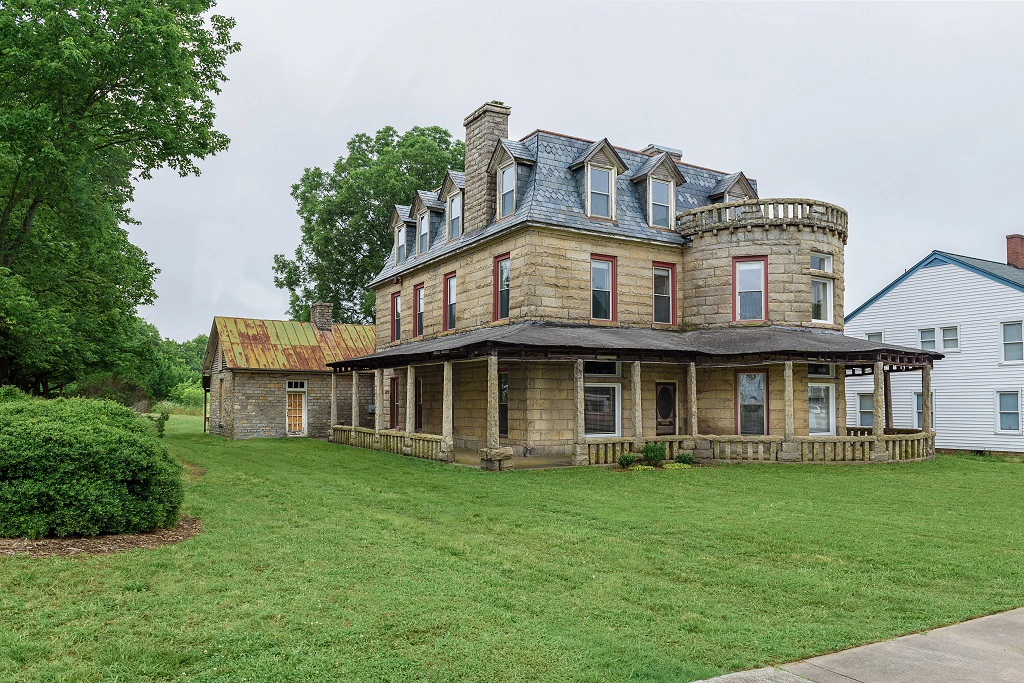SALISBURY – OctoberTour is back in person for 2021 with protocols in place aimed to provide visitors with the safest experience possible.
The weekend starts Friday at the home of Bill and Shari Graham with the Patrons’ Party to celebrate homeowners and sponsors. It continues Saturday and Sunday with both live and virtual home tours and a virtual silent auction. Tours on Saturday are from 10 a.m. to 5:30 p.m. Tours on Sunday are from noon to 5:30 p.m.
Tickets can be purchased at octobertour.com until noon Friday and in person at the Historic Salisbury Sation, 215 Depot St., where online tickets can be picked up. Day-of sales are card only. Tickets are $30 for non-Historic Salisbury Foundation members and $25 for HSF members, whether purchased in advance or on the days of the tour.
Attendees are required to bring proof of vaccination or a negative test for COVID-19 within the preceding 72 hours to a tour to pick up tickets. Masks must be worn inside tour sites. Docents and volunteers must also provide proof of vaccination or a negative COVID-19 test. Each person attending must be present to pick up tickets unless prior arrangements have been made.
The tour sits are as follows:
Fulton-Mock-Blackmer House, 1820, 112 South Fulton St.
This structure was completed in late 1820 to early 1821 as a residence for local merchant John Fulton, his family and as a place for boarding young ladies attending the early Salisbury Female Academy, now known as the Dr. Josephus Hall House.
The house suffered a fire in 1984 and sat vacant for nearly 30 years. Historic Salisbury Foundation purchased the property in 2012 and began the cleaning and stabilization process. During the work, early features such as wallpapers and pocket doors were discovered, and missing windows and the back porch were replaced. The house was featured as a work in progress on OctoberTour 2013, and HSF sold the property to the current owners in 2014. The house was featured as fully restored on OctoberTour 2015 and the owners and contractors received an HSF preservation award for their work.
The Rock House, 1913, 225 South Fulton St.
This two-story Craftsman bungalow was constructed in 1913 during the last decade of the arts and crafts era. The arts and crafts movement began in England and emphasized comfort, simplicity, honesty, handicraft and the dignity of work. L.S. Bradshaw Construction built this home and matching garage possibly for W.B. Taylor, one of the home’s first owners.
Hall House, 1820, 226 South Jackson St.
Salisbury’s landmark residence was originally an 1820 Federal-style frame house used by the girl’s department of Salisbury Academy. The original Salisbury Academy closed after five years of operation, and the building was sold.
Over the years and owners additions were made to the house including a two-story front porch, gateway arch, lengthened front windows and an enlarged attic. A two-room detached kitchen, staffed by enslaved people before emancipation, was restored in 2006.
The grounds contain an herb garden and antique rose garden. The cannon on the front lawn once guarded the Salisbury Confederate Prison. The site is open for guided tours on Saturdays from March through December.
In Summer 2019, the movie “The 24th” was filmed in various locations around Salisbury, including the Hall House. The film was directed by Kevin Willmott, Oscar winner for Best Adapted Screenplay for “BlacKkKlansman,” along with Spike Lee, Charlie Wachtel, and David Rabinowitz.
Leo Wallace Sr. House, 1912, 301 West Fisher St.
This Mission-style house was built for Ella and Leo Wallace, Sr., on what was once part of the Dr. Josephus Hall House grounds. At that time, Wallace worked in the family business of men’s clothing and furnishings, Victor Wallace & Sons. In 1927, the Wallaces purchased the large home at 508 South Fulton St., the Hambley-Wallace House.
John Ernest Ramsey designed the house using stucco walls, red clay tile roof, curved parapets and widely overhanging eaves. His son, John Erwin Ramsey, was also an architect, and designed many Mid-Century houses in the state. The Mission style originated in California, as a counterpart to the Colonial Revival style, which was popular in the eastern half of the United States during the same period.
Napoleon Bonaparte McCanless House, 1897, 619 South Main St.
This Second-Empire structure, built from locally quarried granite, boasts 15 rooms over three floors, a steep mansard roof, a two-story tower topped with granite balustrades, and a detached original kitchen house. Napoleon Bonaparte McCanless, built the house for his family in 1897. McCanless was directly involved with numerous ventures in the County including Harris Granite Co., multiple cotton mills, banks, hotel interests including the Empire Block, residential developments on Thomas Street and the Salisbury Electric Light and Street Railway Company.
In 2019, HSF acquired the property from Livingstone College and began the process to stabilize the roof and make the house secure. It was featured on the 2020 Virtual OctoberTour as an in-person experience for sponsors of the Tour and a pick-up location for sponsor gift baskets. New owners acquired the house in July 2021.
Walter F. McCanless House, 1925, 204 Confederate Ave.
Construction began in 1925 and was completed in 1929 on this two-story yellow brick Renaissance revival home built for industrialist and promoter Walter F. McCanless. The 6,200-square-foot home sits on 2 and a half acres, and its two-story garage served as servant quarters.
The residence features a hipped roof of green Ludowici tiles, buff iron-embedded brick and molded stone quoins, which rise to friezes with embedded colored tiles. The front also features carved stone window boxes. At both sides of the house are purlins, the northern side a loggia and to the south a sunroom with attached porte-cochere. A balustrade-enclosed terrace carries completely across the front of the main block and pavilions.
Virtual tours include:
Peacock-Fowler House, 1924, 316 South Fulton St.
This brick, prairie-style home and its attached carriage house were built in 1924 by A.R. Lazenby, Salisbury’s renowned house builder. Its first owner was Phillip N. Peacock.
The home’s exterior features strong horizontal lines, minimal ornamentation, broad overhanging eaves, windows in sets of three, and a pyramid-form hip roof. Note the modernist spacing of the window panes on the top half of the casement. That detail is duplicated on the interior French doors. In 2007, the house was completely rewired and reroofed. Additions included converting a fifth bedroom to a master bath, air conditioning, a downstairs half bath, laundry area, walk-in closets and new kitchen appliances. Rooms were repainted, oak floors were cleaned and oiled throughout and the kitchen received a floor-to-ceiling renovation.
T.W. Borland House, 1942, 529 Lake Drive
This stately colonial overlooking the City Park Lake was built in 1942 by Charlotte architect William H. Peeps for Mr. and Mrs. Thomas W. Borland. Borland worked as the president and chairman of Carlton Yarn Mills. He served on numerous boards in Rowan County including the YMCA, Rowan Regional Medical Center, Rowan-Salisbury Schools, and was one of the first board members for Salisbury Community Foundation. He served on the church council for St. John’s Lutheran Church and his wife, Margaret, was a volunteer for Historic Salisbury Foundation.
Additions of a living area, new master bedroom and bath, and an additional bedroom and bath were completed in 1950 by Beam and Mackintosh Architects of Charlotte. After Mr. Borland’s death in 2006, Mrs. Borland sold the home in 2008 to Dr. Richard and Lacreasa Allen, who made additional renovations to the home. The current owners purchased the home in 2014 and have continued renovations, including converting the “dungeon” basement into a family hangout space with a wine cellar.
The home retains many original features including two completely original upstairs bathrooms, stunning wood paneling in the library and living room, large multi-pane bow windows, decorative ironwork on the double porches, a rear dutch door with original hardware and exterior fireplace. The extensive 5-acre grounds include a large brick patio, flagstone walkways and a playhouse.
Moses Corriher House, 1902, 1475 Corriher Springs Road
Moses Corriher and his wife, Geneva, built this house around 1902 shortly after they purchased the surrounding 150-acre farmland in southern Rowan County. The home expanded over time. The house remains in the Corriher family.
The Corrihers resisted replacing the original claw-footed bathtub, though they made other changes. The house’s hardwood floors, fireplace bricks, beadboard ceilings and exposed beams are original to the house. Large windows overlook the nearby fields.

